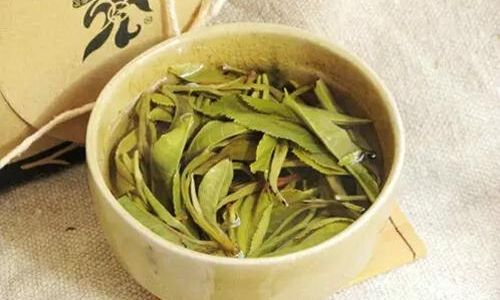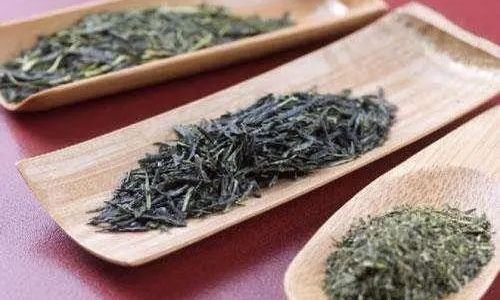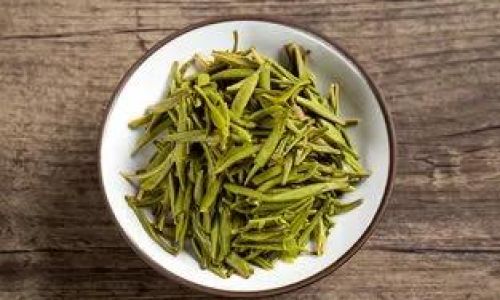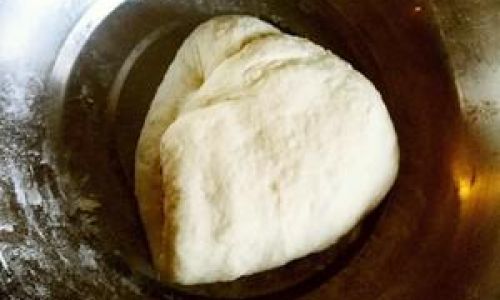Table of content
- Green Tea: The Prime Candidate
- Black Tea: A Debatable Choice
- Oolong and White Teas: The Middle Ground
- Herbal Infusions and Tisanes
- Matcha and Powdered Teas
- Airtight Containers Are Non-Negotiable
- Minimize Moisture Exposure
- Label and Date Your Tea
- Avoid the Freezer (Unless Necessary)
- Acclimatize Before Opening
- Myth 1: Refrigerated Tea Tastes Stale
- Myth 2: All Teas Benefit from Refrigeration
- Myth 3: Refrigeration Kills Nutrients
- Myth 4: Tea Absorbs Fridge Odors Instantly
- Cold-Brewed Iced Tea
- Tea-Infused Cocktails and Mocktails
- Culinary Garnishes
- DIY Tea Facials
Tea, a beverage cherished across continents, has been steeped in tradition for millennia. From the ceremonial precision of Japanese matcha to the bold brew of British breakfast blends, the ways to enjoy tea are as diverse as the cultures that savor it. Yet, amid these time-honored practices, a modern question emerges: Can tea be refrigerated? At first glance, the idea might seem counterintuitive. After all, many tea enthusiasts swear by storing leaves in airtight tins away from light and humidity. But as culinary trends evolve and home cooks experiment, the refrigerator—once reserved for perishables—has become a potential ally in preserving tea’s flavor and potency. This article delves into the science, myths, and practicalities of refrigerating tea, exploring whether this unconventional method deserves a place in your kitchen.
The Science of Tea Preservation: Why Temperature Matters
To understand if refrigeration works, we must first grasp what degrades tea over time. Tea leaves, whether processed into green, black, oolong, or white varieties, are rich in bioactive compounds like polyphenols, caffeine, and amino acids. These components contribute to tea’s health benefits and distinctive taste profiles. However, they are also vulnerable to environmental factors:
- Oxygen: Oxidation is a natural enemy of tea. When leaves are exposed to air, polyphenols break down, leading to a stale, flat flavor.
- Light: Ultraviolet rays accelerate the degradation of chlorophyll and other pigments, dulling the tea’s color and aroma.
- Moisture: Even slight humidity can trigger mold growth or cause leaves to clump, ruining texture and taste.
- Heat: Elevated temperatures speed up chemical reactions, causing flavors to fade faster.
Refrigeration addresses several of these issues. Cold temperatures slow down oxidation and enzymatic activity, preserving delicate compounds like catechins in green tea. The fridge’s dry environment also minimizes moisture-related risks—provided the tea is stored correctly. However, there’s a catch: refrigerators introduce new variables, such as condensation and odor absorption, which could harm tea if mishandled.
Types of Tea and Refrigeration Suitability
Not all teas are created equal, and their response to refrigeration varies:
Green Tea: The Prime Candidate
Green tea, prized for its grassy freshness and high antioxidant content, is particularly sensitive to heat and light. Studies suggest that refrigerating green tea can extend its shelf life by up to six months compared to room-temperature storage. The cold slows the oxidation of catechins, retaining the tea’s vibrant flavor and health benefits. However, improper storage—such as leaving the package open—can lead to moisture buildup, resulting in a musty taste.

Black Tea: A Debatable Choice
Black tea, fully oxidized and robust, is less perishable than green tea. Its bold flavors can withstand slight degradation for months, even at room temperature. Refrigeration might offer marginal benefits for long-term storage (over a year), but many connoisseurs argue that the subtle nuances of high-quality black tea are better preserved in cool, dark pantries.
Oolong and White Teas: The Middle Ground
Oolong teas, partially oxidized, and white teas, minimally processed, occupy a gray area. Lightly oxidized oolongs (e.g., Tie Guan Yin) may benefit from refrigeration to maintain their floral complexity, while darker oolongs (e.g., Wuyi Rock Tea) are more forgiving. White teas, with their delicate silver needles, can be refrigerated but require meticulous sealing to prevent moisture infiltration.
Herbal Infusions and Tisanes
Herbal blends, such as chamomile or peppermint, aren’t technically “tea” (since they lack Camellia sinensis leaves), but their storage principles apply. Most herbal tisanes are durable and can be refrigerated without significant flavor loss. However, citrus-based blends or those with dried fruits may absorb fridge odors, so airtight containers are essential.
Matcha and Powdered Teas
Matcha, a finely ground green tea, is notoriously prone to degradation. Once exposed to air, its vibrant green color fades, and its umami flavor diminishes. Refrigeration in a vacuum-sealed container can prolong matcha’s potency for up to six months. Freezing is even more effective for long-term storage, though thawing requires care to avoid condensation.
Best Practices for Refrigerating Tea
Refrigeration isn’t as simple as tossing a tea bag into the crisper. To avoid pitfalls, follow these guidelines:
Airtight Containers Are Non-Negotiable
Exposure to fridge odors is a tea’s worst nightmare. Use opaque, airtight containers made of glass or stainless steel. Avoid plastic, which can trap residual smells and leach chemicals over time. For small quantities, vacuum-sealed bags work wonders.
Minimize Moisture Exposure
Even in the fridge, moisture is enemy number one. Ensure tea leaves are completely dry before refrigerating. If transferring from an original package, consider dividing the tea into portions to reduce opening the container frequently.

Label and Date Your Tea
The fridge is a black hole for forgotten items. Label each container with the tea type and refrigeration date. This practice prevents accidentally consuming stale tea and helps track flavor longevity.
Avoid the Freezer (Unless Necessary)
Freezing tea is a polarizing topic. While it halts degradation almost entirely, repeated thawing cycles introduce moisture. Save freezing for rare, aged teas or bulk purchases, and thaw portions in the fridge overnight before use.
Acclimatize Before Opening
Bring refrigerated tea to room temperature before opening the container. Sudden temperature changes cause condensation, which can seep into leaves and ruin texture.
Debunking Myths About Refrigerated Tea
Myth 1: Refrigerated Tea Tastes Stale
When done correctly, refrigeration preserves freshness. The key is minimizing moisture and odor contamination. A well-stored green tea from the fridge should taste as bright as the day it was packed.
Myth 2: All Teas Benefit from Refrigeration
As discussed, robust black teas and aged pu-erh may not need refrigeration. Overchilling these varieties could mask their inherent complexity without significant gains.
Myth 3: Refrigeration Kills Nutrients
Cold temperatures don’t destroy tea’s antioxidants or vitamins; they merely slow their breakdown. In fact, refrigerated green tea retains more catechins than pantry-stored counterparts over time.
Myth 4: Tea Absorbs Fridge Odors Instantly
While tea is porous, airtight containers mitigate this risk. The notion that a single night in the fridge ruins flavor is exaggerated—but prolonged exposure without sealing is a genuine concern.

Expert Opinions and Studies
Scientific research supports refrigeration’s role in tea preservation. A 2018 study published in the Journal of Food Science found that green tea stored at 4°C (39°F) retained 90% of its catechin content after six months, compared to 65% for room-temperature samples. Similarly, a 2020 Korean research paper highlighted that refrigerated matcha maintained its vivid hue and l-theanine levels better than frozen or pantry-stored alternatives.
Tea industry professionals also endorse selective refrigeration. Harney & Sons, a renowned tea merchant, recommends refrigerating delicate greens like Dragon Well, while advising against it for hearty blends like English Breakfast. In Japan, refrigerated green teas are common in supermarkets, packaged in nitrogen-flushed cans to ensure freshness.
Creative Uses for Refrigerated Tea
Refrigeration isn’t just for storage—it unlocks culinary possibilities:
Cold-Brewed Iced Tea
Steep refrigerated tea leaves in cold water for 8–12 hours for a smooth, low-bitterness iced tea. This method works exceptionally well with green, oolong, and herbal teas.
Tea-Infused Cocktails and Mocktails
Chilled tea concentrates can elevate beverages. Mix refrigerated jasmine green tea with gin and elderflower liqueur for a refreshing twist on a gin fizz.
Culinary Garnishes
Freeze refrigerated tea into ice cubes to flavor water or cocktails without dilution. Alternatively, grind dried tea leaves into a powder and sprinkle over salads or desserts.
DIY Tea Facials
Used tea bags, stored in the fridge, can soothe puffy eyes or act as a gentle exfoliant when mixed with honey.

The Environmental and Economic Angle
Refrigerating tea also aligns with sustainability goals. By extending a tea’s lifespan, you reduce waste from discarded stale leaves. For avid tea drinkers, buying in bulk and refrigerating portions can lower packaging waste and long-term costs.
However, energy consumption is a consideration. Constantly opening the fridge to access tea increases power usage. To mitigate this, store tea in a dedicated compartment or use a mini-fridge for non-perishables.
Conclusion: To Chill or Not to Chill?
The verdict? Tea can be refrigerated—but with caveats. Green, white, and matcha teas gain the most from cold storage, while robust black and aged varieties may not need it. Success hinges on impeccable sealing, minimal moisture exposure, and strategic portioning. For casual drinkers, a cool, dark pantry might suffice. But for tea aficionados seeking to preserve every nuance, the refrigerator is a powerful, if unconventional, tool.
As with any culinary practice, experimentation is key. Try refrigerating a small batch of your favorite tea and compare it to pantry-stored leaves after a month. You might just find that a chilled brew offers a brighter, more enduring taste experience. After all, tea’s beauty lies in its adaptability—a beverage that bridges tradition and innovation, one sip at a time.






0 comments